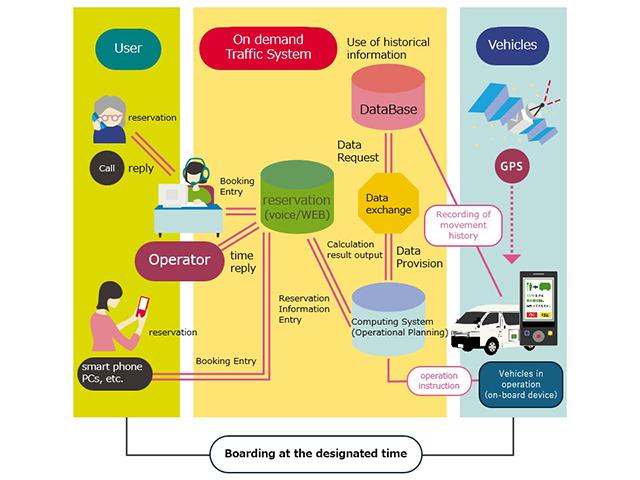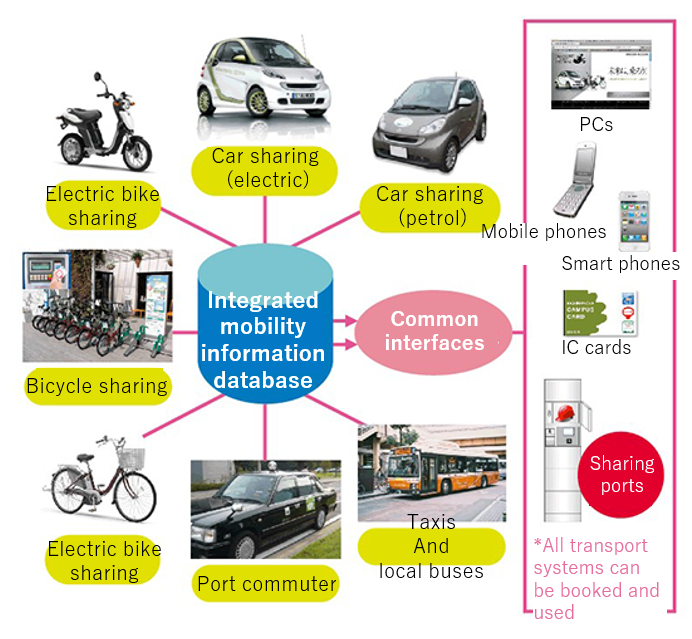Experiments on public transport systems to support vulnerable people and their daily mobility within their daily lives have started.
In order to support the daily mobility of citizens with increased awareness, it is necessary to prepare means of transport, both public and personal. The ITS can fulfil its purpose as an ITS when citizens can choose from a variety of means of transport the most suitable one for their use and situation, and use it to its fullest extent. And in Kashiwa City, a social experiment has started on the new public transport system needed for this purpose.
Until now, most public transport systems have been designed for mass transportation, with people mostly adapting to the means of transport, such as time and location. However, the public transport systems of the future need to be user-friendly for all kinds of users, including the elderly, people with disabilities, people with children and people carrying a lot of luggage, who have tended to be left behind in the past. Another important role of public transport systems is to support not only medium- to long-distance travel, but also easy travel within a radius of two to three kilometres in everyday life. Kashiwa has already collected a great deal of empirical data on on-demand transport and multi-mobility sharing, and is now entering a phase in which it aims to further improve convenience. We will continue to develop public transport systems that are easy for people to use and easy for them to use, while placing importance on the viewpoints of people who have tended to avoid going out because of the inconvenience.
The University of Tokyo On-demand Transport System – a new welfare transport system for a super-aged society
On-demand transport is a new transport system in which buses move according to users’ reservations. It is efficient in that it combines the features of both local buses and taxis, and does not move when there are no users, but operates by combining rides when there are many users. Because of these features, the system is being used as a new means of transport for the elderly not only in rural areas where local bus services have declined, but also in urban areas. The most significant feature of the system is the ability to specify departure and arrival times. This makes it possible to meet demands that require punctuality, such as hospital appointments and connections at train stations. In addition, computers can be used to process reservations, create operation plans, instruct dispatch and store data automatically. Such automation has significantly reduced the knowledge and burden required of operators. A variety of booking interfaces are available, including telephone, touch-screen and web-based, allowing users to choose the one that is easiest for them to operate.
The system has now been evaluated for its usefulness and is in operation in nearly 30 municipalities. Usage logs from these municipalities are stored in a database and can be used for various purposes, such as service improvement and analysis of actual travel conditions.
Multi-mobility sharing system – multi-mobility sharing with different vehicles on a single card
The multi-mobility sharing system consists of two modules: an integrated database and a common interface.
The system integrates several sharing services, including petrol and electric vehicles, electric bikes and bicycles. Users have a single ID and IC card and can access various services through the common interface. For example, if the vehicle they want to rent is being used by another user, they can choose another transport option. The system’s log data is stored in an integrated database and can reproduce the movements in the area of operation. The accumulated data can also be used for urban planning.
The system has two features that differentiate it from existing sharing systems. First, users can share various means of transport via a common interface. Second, the system can also support one-way use. These features can contribute to improved mobility, lower administrative costs and carbon dioxide emissions.


